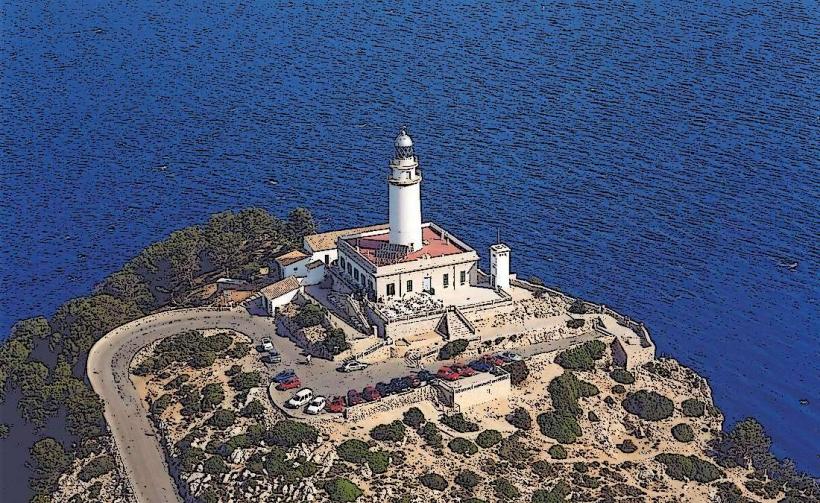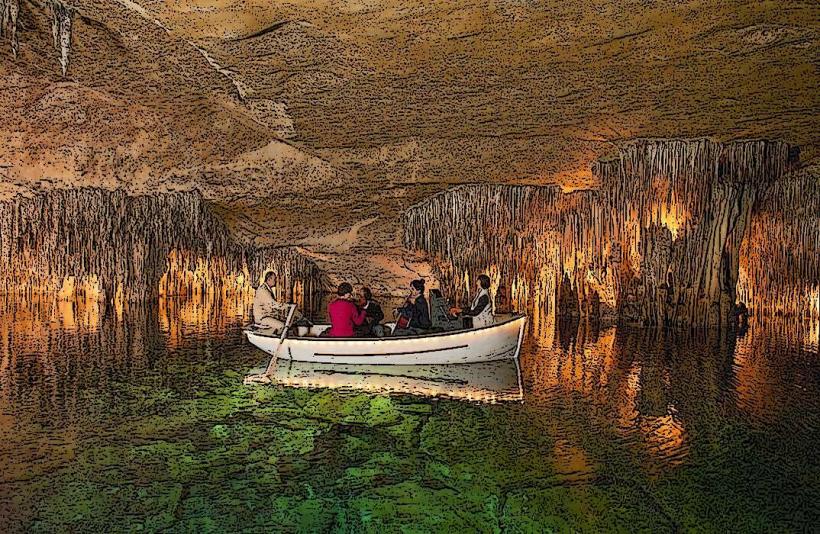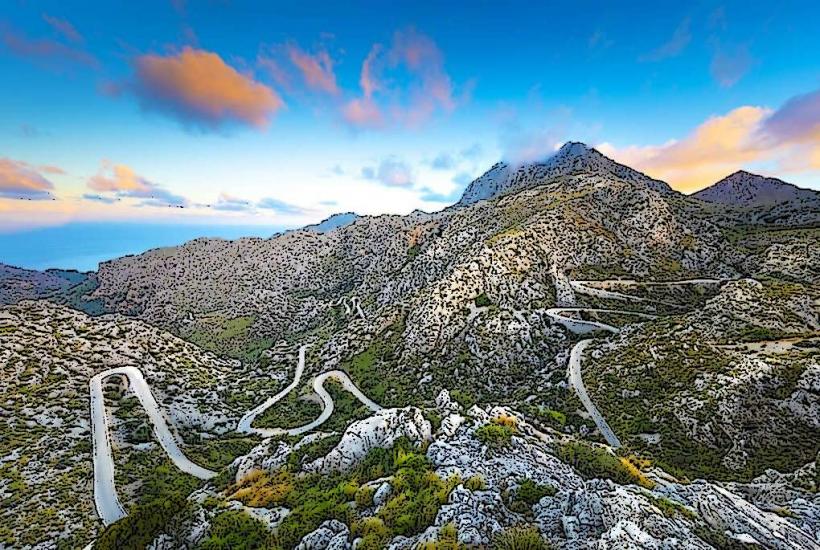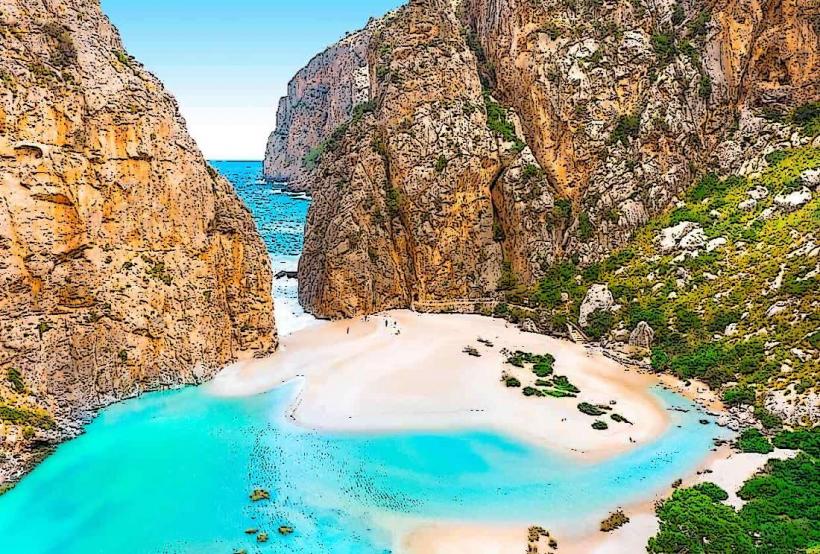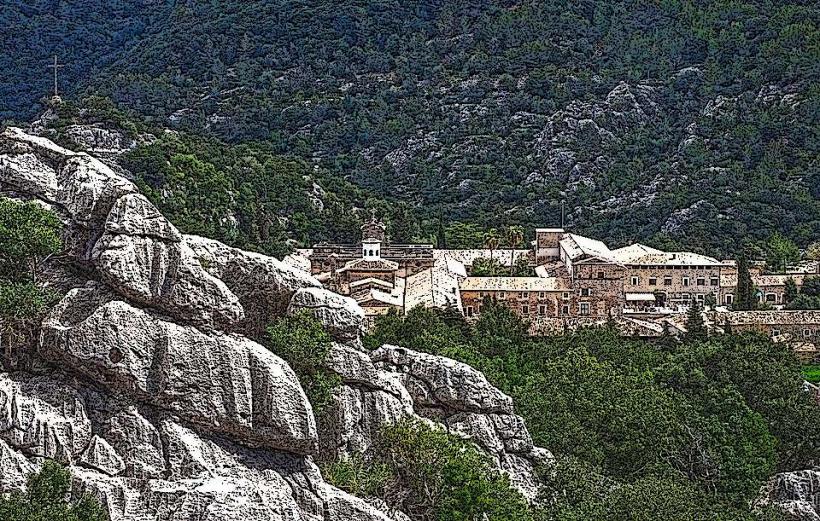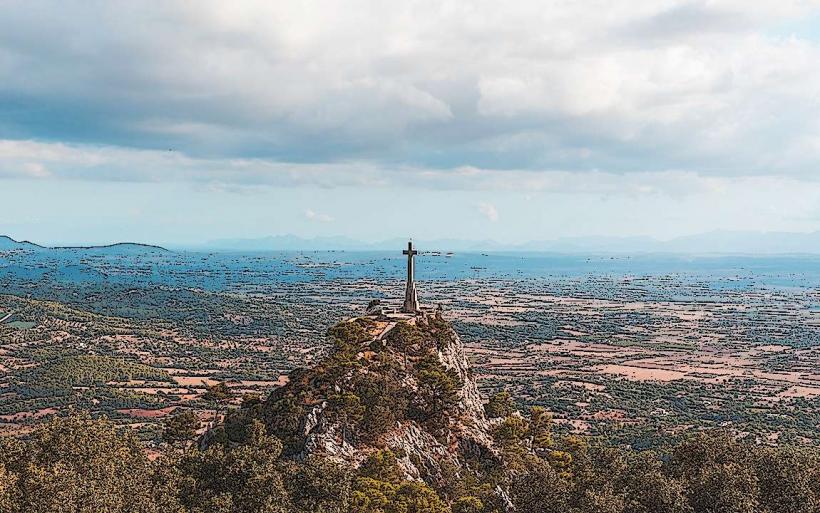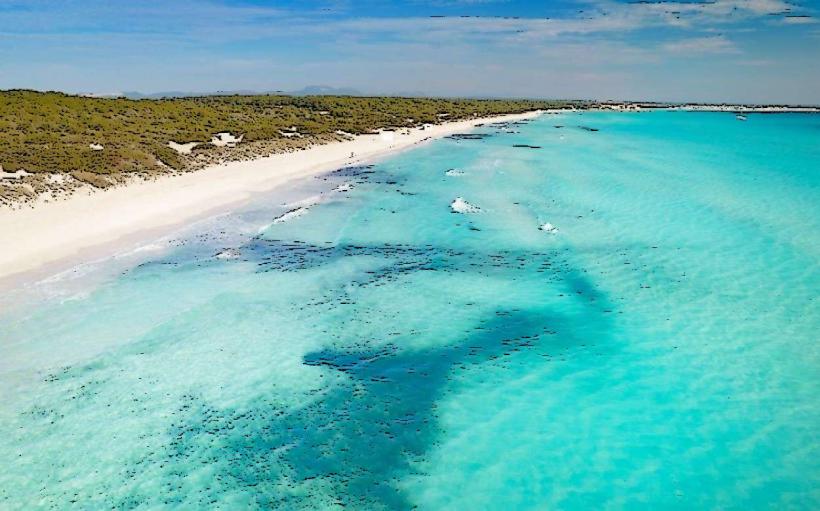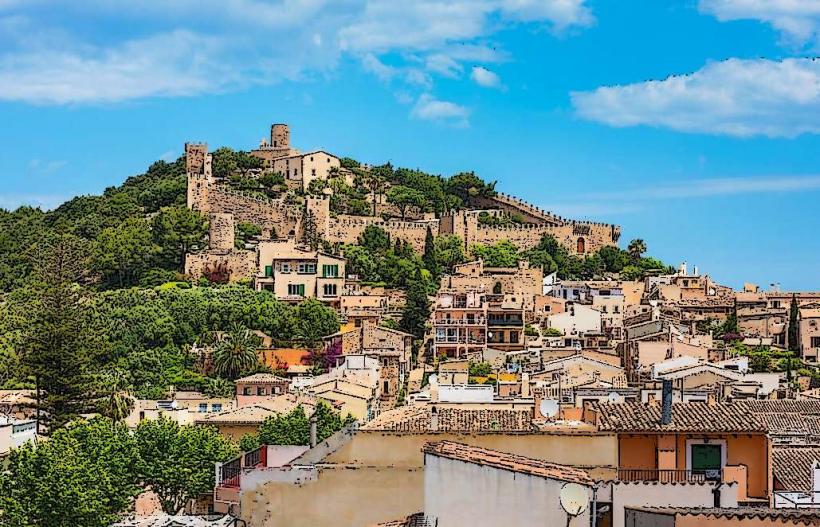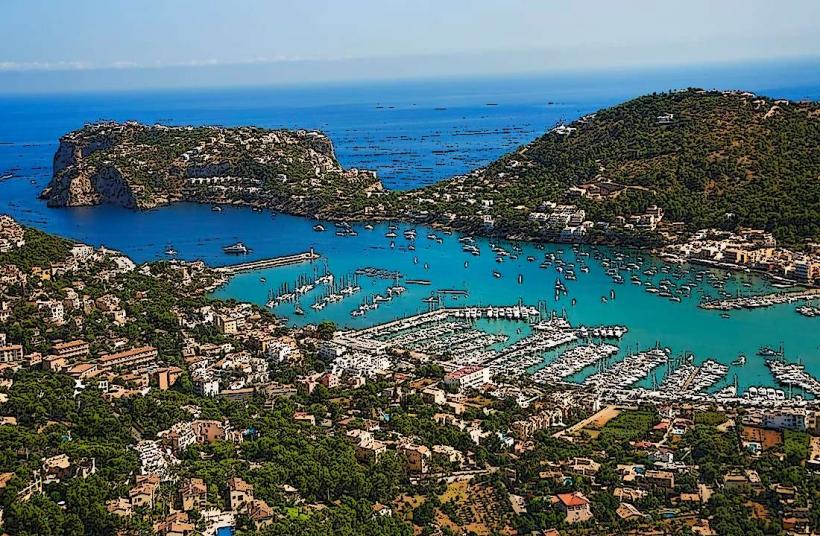Information
Landmark: Mondragó Natural ParkCity: Mallorca Island
Country: Balearic Islands
Continent: Europe
Mondragó Natural Park (Parc Natural de Mondragó) is a protected nature reserve located on the southeastern coast of Mallorca, Spain, near the town of Santanyí. This scenic park covers an area of 2,000 hectares (4,940 acres) and is renowned for its rich biodiversity, pristine beaches, and diverse landscapes, making it one of the most popular natural parks on the island. Mondragó offers a combination of coastal beauty, forests, and wetlands, providing ample opportunities for outdoor activities and relaxation.
1. Geography and Landscape
Location:
Mondragó Natural Park is situated near the southern tip of Mallorca, approximately 10 kilometers (6 miles) from the town of Santanyí. The park is bordered by the Mediterranean Sea to the south, which provides breathtaking coastal views and several secluded beaches.
Topography:
The park's terrain is characterized by a combination of rolling hills, gently sloping valleys, and coastal cliffs, offering a diverse range of ecosystems. It features several wetlands, forests, and sand dunes, with a mix of pine trees, olive groves, and scrubland. The park’s varied topography provides a perfect environment for wildlife and plant species, making it a haven for nature lovers.
Beaches:
Mondragó is home to two stunning beaches: S'Amarador and Cala Mondragó. Both beaches have fine sand and clear turquoise waters, ideal for swimming, sunbathing, and picnicking. They are surrounded by lush vegetation and rocky cliffs, giving visitors a sense of tranquility and isolation. The beaches are accessible by walking paths and are often less crowded than other popular beaches on the island.
2. Flora and Fauna
Flora:
Mondragó Natural Park boasts a variety of plant species, thanks to its diverse ecosystems. The park's forests are primarily composed of pine trees, including the Aleppo pine (Pinus halepensis), as well as holm oaks and carob trees. In addition to the forested areas, there are also extensive stretches of scrubland and wetland plants, such as reeds and rushes.
Fauna:
The park is rich in wildlife, and it is home to several species of birds, insects, and small mammals. Notable bird species include the mallard, heron, and the Kentish plover, which can often be seen in the park's wetlands and coastal areas. The park also supports various reptiles, such as lizards, and a variety of butterflies and moths. Additionally, the Mediterranean coastline is home to a variety of marine life, and visitors may encounter sea creatures such as fish, crabs, and the occasional sea turtle while swimming or snorkeling.
3. Hiking and Outdoor Activities
Hiking Trails:
Mondragó Natural Park offers several well-marked hiking trails that allow visitors to explore its stunning landscapes. The trails vary in difficulty, from easy walks along the coastline to more challenging routes that take you deeper into the park's hills and valleys. Some trails offer spectacular views of the beaches and the Mediterranean Sea, while others lead through shaded forests or wetlands.
Birdwatching:
The park is a birdwatching paradise, particularly in the wetlands, where migratory birds such as waders and herons can be observed. Birdwatching enthusiasts often visit Mondragó during the spring and autumn months, when migratory species pass through Mallorca on their journey. The park has several observation points where visitors can view the birdlife without disturbing the animals.
Cycling:
The park is also a popular destination for cycling. There are several routes that can be explored by bike, offering scenic views of the coastal areas and forests. Cycling is a great way to experience the natural beauty of the park at a relaxed pace.
Snorkeling and Swimming:
Mondragó’s beaches, especially Cala Mondragó and S'Amarador, are ideal spots for swimming and snorkeling. The clear waters are home to a variety of marine life, including colorful fish and underwater plants. The sheltered coves and calm waters make it a safe and enjoyable place for families to swim and for more adventurous visitors to explore the underwater world.
Kayaking and Canoeing:
The calm, clear waters around Mondragó are perfect for kayaking and canoeing. Visitors can rent kayaks and explore the coastline, paddle through the coves, and enjoy the stunning views of the cliffs and beaches. Kayaking is a peaceful way to experience the park from a different perspective and connect with nature.
4. Cultural and Historical Sites
S'Amarador Chapel:
Located near the beach of S'Amarador, the small Chapel of S'Amarador is a simple structure that is often visited by hikers and pilgrims. The chapel is set against the backdrop of the natural beauty of the park and offers a peaceful spot for reflection. While not a major historical site, it is a charming and serene location within the park.
Traditional Farms:
Mondragó is dotted with a number of traditional stone farmhouses (known as fincas), which were historically used by farmers to tend to the land. Some of these buildings are still used today, while others have been abandoned. The presence of these farmhouses adds to the cultural heritage of the park and provides a glimpse into the island's agricultural past.
Archaeological Remains:
Evidence of early human habitation can be found in the park's surroundings. Ancient ruins, such as megalithic structures and remains of old settlements, can be explored in the park. While not heavily developed as tourist attractions, these sites are a testament to the area’s long history of human activity.
5. Environmental Conservation
Protected Area:
As a Natural Park, Mondragó is a protected area, and its primary goal is the conservation of the natural environment and wildlife. The park is part of Mallorca's efforts to preserve its natural landscapes and biodiversity, and visitors are encouraged to respect the rules and regulations set in place to protect the park's fragile ecosystems.
Sustainability:
The park has been developed with a focus on sustainability, promoting responsible tourism and environmental awareness. Walking paths are clearly marked, and visitors are encouraged to stay on the trails to avoid disturbing the local wildlife and flora. In addition, there are efforts to preserve the local habitats, including the wetlands and coastal areas, which are vital to the island's biodiversity.
6. Visitor Facilities
Visitor Center:
The park has a visitor center located near the entrance, where visitors can learn more about the park's ecosystems, history, and conservation efforts. The center offers educational materials, maps, and information on the park’s wildlife and trails.
Parking:
There are several parking areas located near the entrances to the park, particularly near the beaches. During the high summer season, parking can get crowded, so it is advisable to visit early in the day or later in the afternoon.
Restrooms and Picnic Areas:
The park is equipped with public restrooms and picnic areas, making it a convenient location for families and groups. Visitors can pack a lunch and enjoy a meal surrounded by nature, taking in the beautiful surroundings while respecting the park's environmental guidelines.
7. Best Time to Visit
Spring and Autumn:
The best times to visit Mondragó Natural Park are during the spring and autumn months when the weather is mild, and the park’s flora and fauna are at their most vibrant. Spring is particularly stunning, with wildflowers in full bloom and birds migrating through the region. Autumn also offers pleasant temperatures for outdoor activities.
Summer:
While summer is also a popular time to visit, the park can get crowded, especially around the beaches. If you plan to visit in the summer, it is recommended to arrive early to secure a parking spot and avoid the busiest times. The warm temperatures make it ideal for swimming, snorkeling, and other water activities.
8. Conclusion
Mondragó Natural Park is a remarkable natural area that offers a diverse range of landscapes and outdoor activities. Whether you're hiking through its forests, swimming at its pristine beaches, or simply enjoying the beauty of its wetlands and cliffs, Mondragó provides a tranquil and immersive experience in Mallorca’s natural world. The park's commitment to conservation ensures that its landscapes and wildlife are protected for future generations, making it a must-visit destination for nature lovers and outdoor enthusiasts alike.

